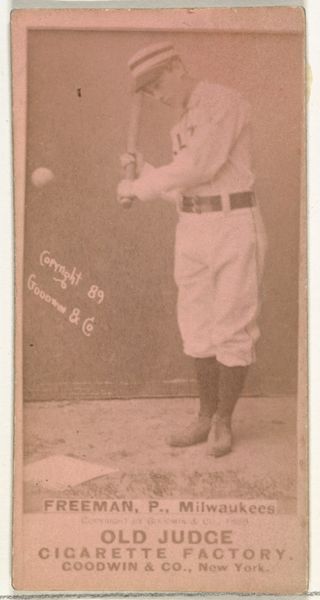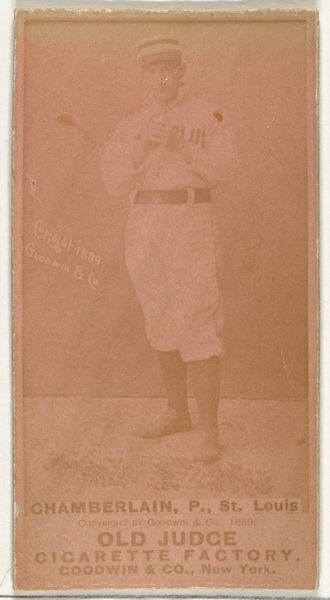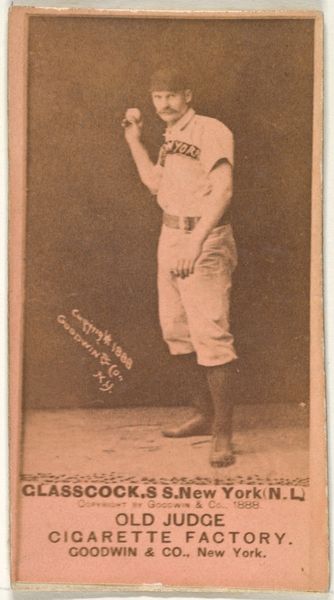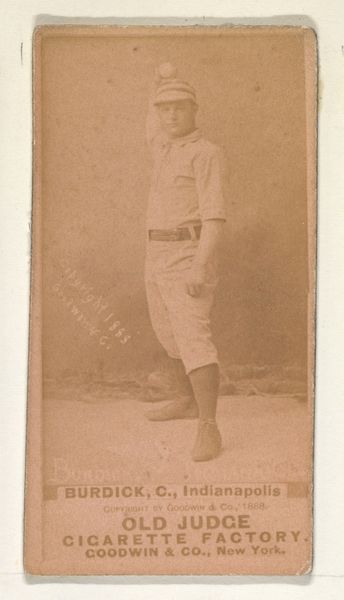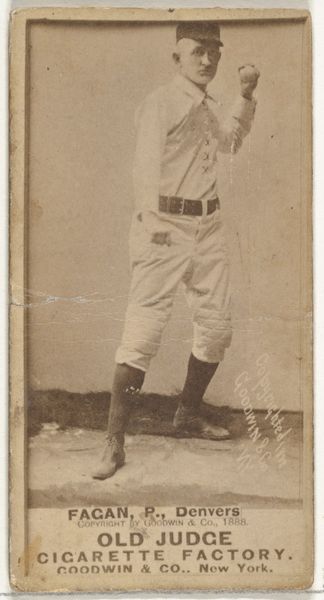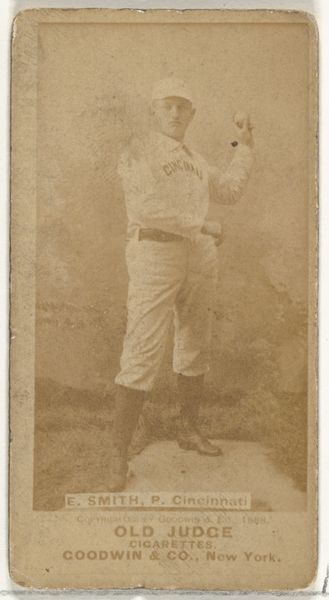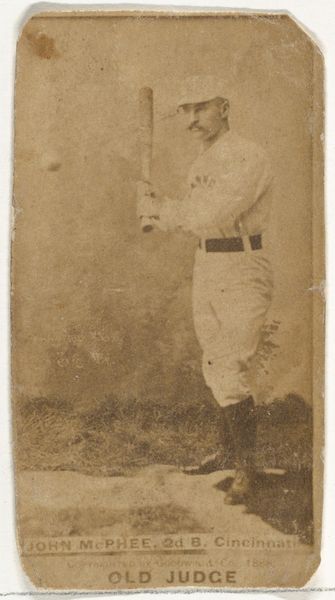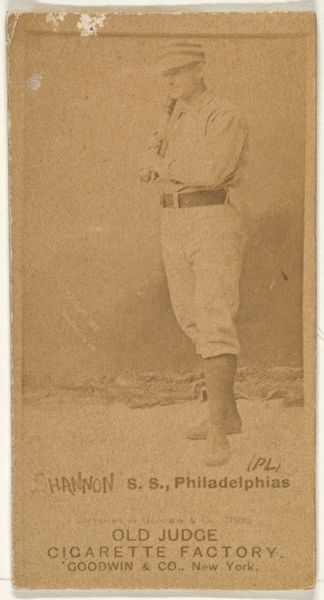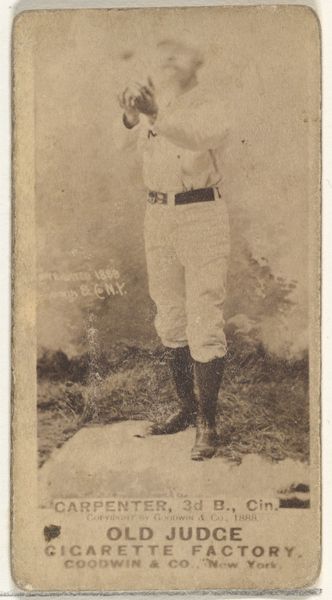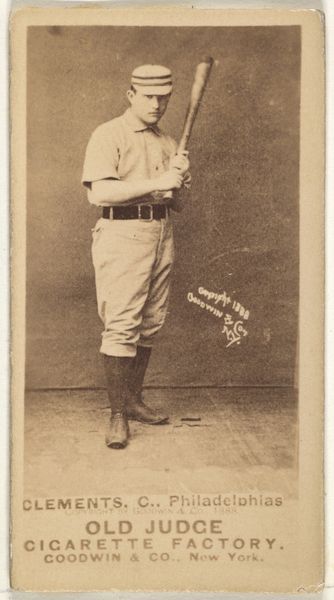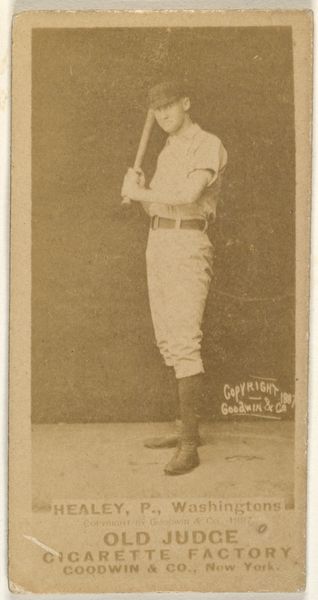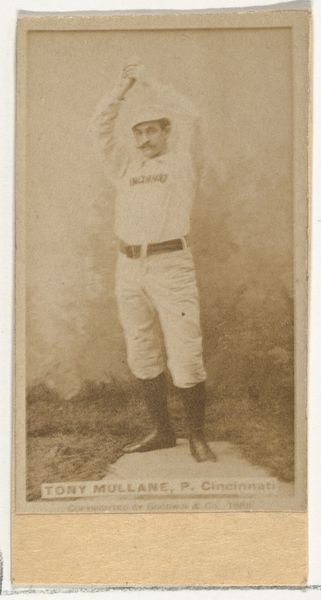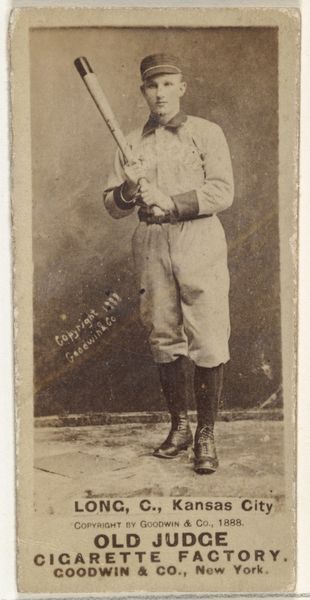
William Benjamin "Shorty" Fuller, Shortstop, St. Louis Browns, from the Old Judge series (N172) for Old Judge Cigarettes 1889
0:00
0:00
print, photography
#
portrait
# print
#
baseball
#
photography
#
men
#
athlete
#
realism
Dimensions: sheet: 2 11/16 x 1 3/8 in. (6.9 x 3.5 cm)
Copyright: Public Domain
Editor: Here we have an 1889 print from the "Old Judge" series by Goodwin & Company, titled "William Benjamin 'Shorty' Fuller, Shortstop, St. Louis Browns." It’s a photographic print, probably mass-produced, showing a baseball player in uniform. The sepia tones give it such a vintage feel. What do you make of this as a piece of art? Curator: This is more than just a photograph of a baseball player. It's a document of late 19th-century industry and consumption. These cards were literally trade items, packaged with Old Judge Cigarettes. The means of production – photography, printing – are directly linked to the promotion and sale of tobacco. How does knowing that change how you see the image? Editor: Well, it definitely makes me think about the target audience and the market forces at play. So it's less about idealizing the athlete and more about, like, leveraging his image to sell cigarettes? Curator: Precisely! The very materiality of this object—the paper, the ink, even the tobacco it was packaged with—speaks to a specific social and economic context. Think about the labor involved in manufacturing cigarettes versus creating "high art" at the time. Do you see how the act of mass production democratizes image-making, even if it's tied to something as problematic as tobacco? Editor: It’s interesting to consider this baseball card as part of the everyday material culture of the late 1800s rather than as some precious, individual artwork. I suppose I never really thought about the labor that goes into this sort of ephemera. Curator: Exactly. By looking at the processes and the materials, we can challenge traditional notions of artistic value and consider the broader social context of art's creation and consumption. Editor: That’s a really interesting way to approach art. I’ll definitely think about that more. Curator: Indeed. Recognizing how material conditions shape even seemingly simple images gives us a much richer understanding of our visual world.
Comments
No comments
Be the first to comment and join the conversation on the ultimate creative platform.
